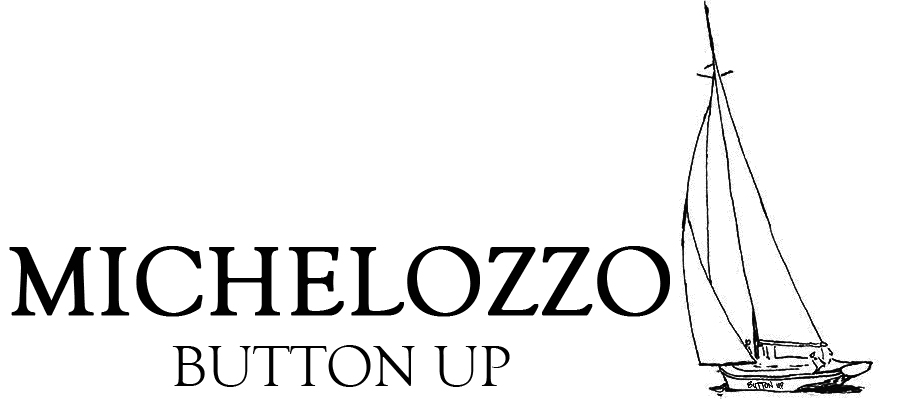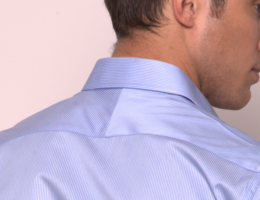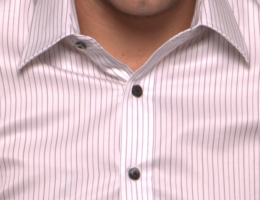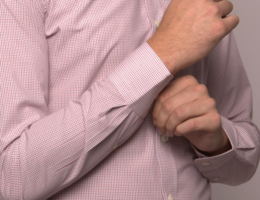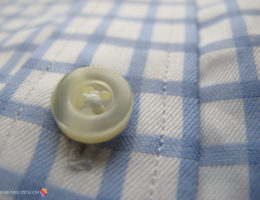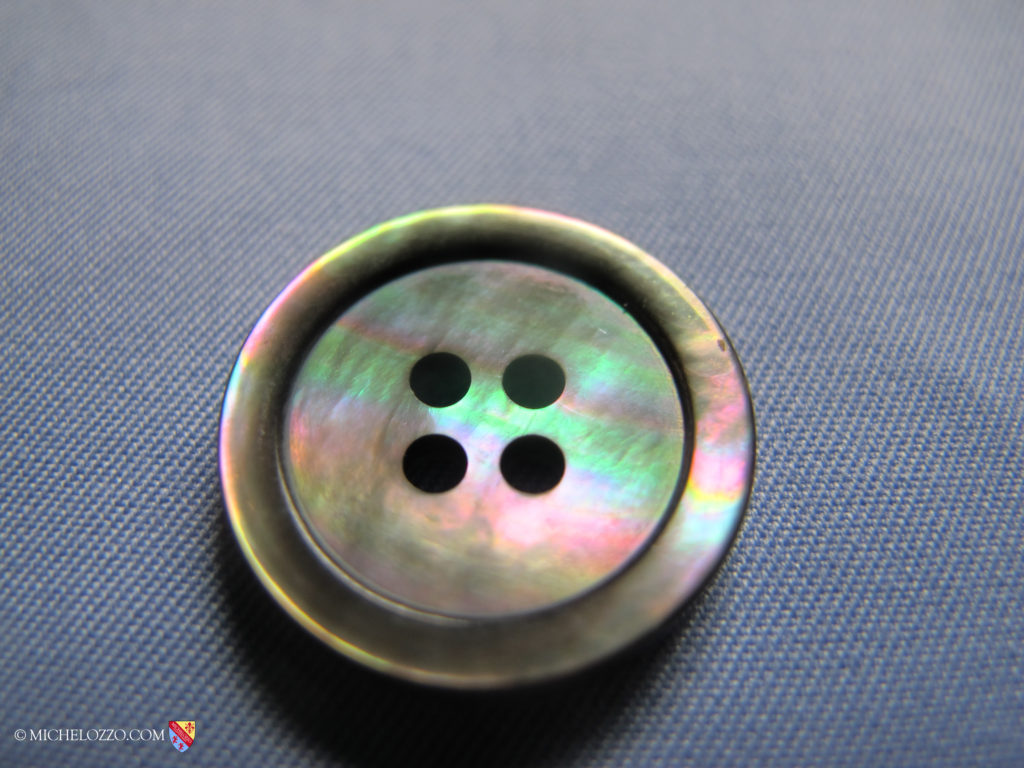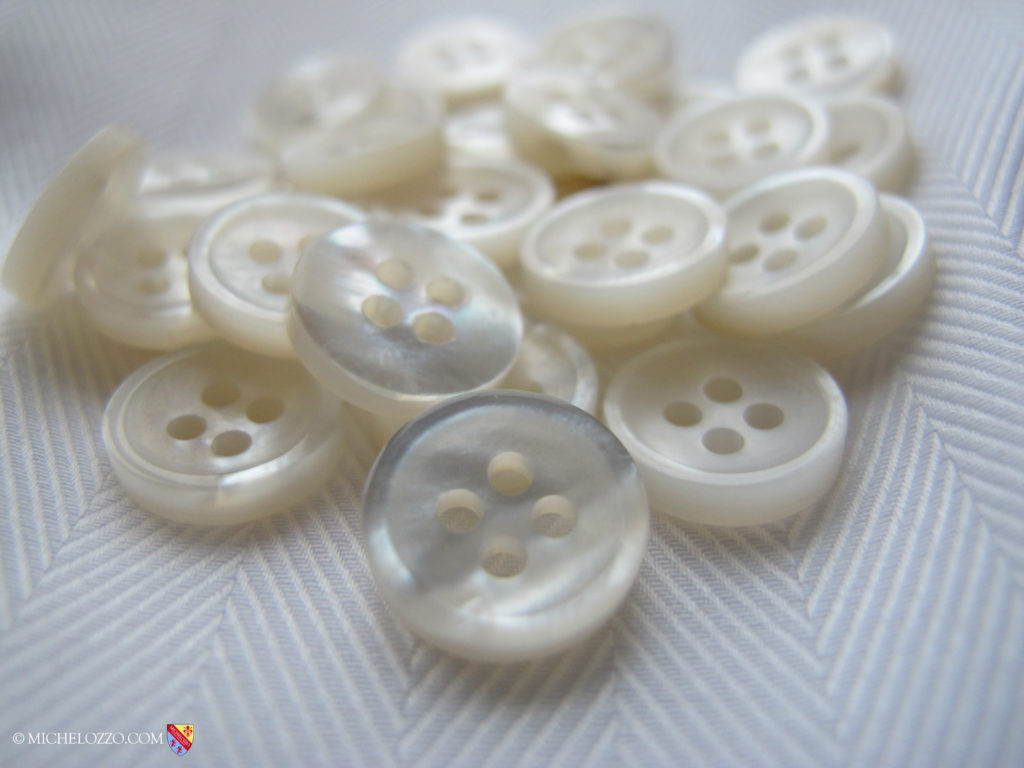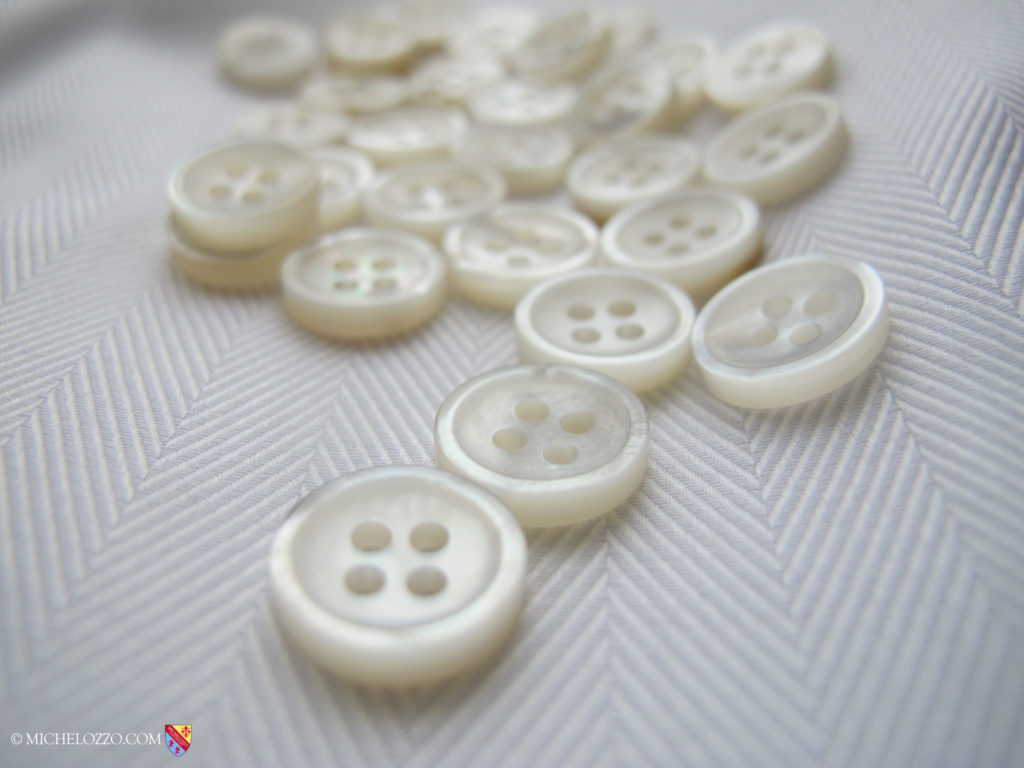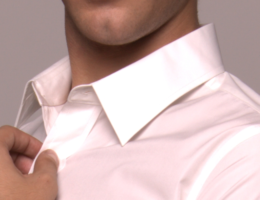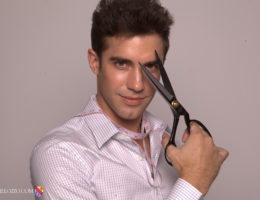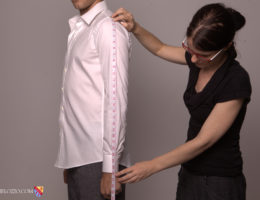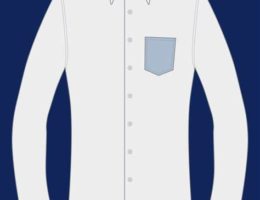The dress shirt yoke is the panel of fabric on the back located below the collar. It covers the entire shoulder length of your dress shirt from left to right. The split yoke is often taken as a sign of a quality dress shirt. The split yoke is comprised of two pieces of fabric sewn together, joined in the middle, to create the yoke.
There is still much ongoing debate on the merits of having a split yoke or unsplit yoke. You may prefer the yoke is simply for style reasons. You may belong to the group of men who argue that the split yoke is better for a number of reasons other than simply style. In the case of a striped dress shirt, it is said that a split yoke will make your dress shirt more stylish by letting the diagonal lines meet when sewn together at an angle. It is also suggested that this will improve the fit of your dress shirt. As having a split yoke often requires more work, the split yoke is often associated with more expensive and quality dress shirts.
All Michelozzo formal shirts from our ready to wear collection and made-to-measure service features the split yoke.
